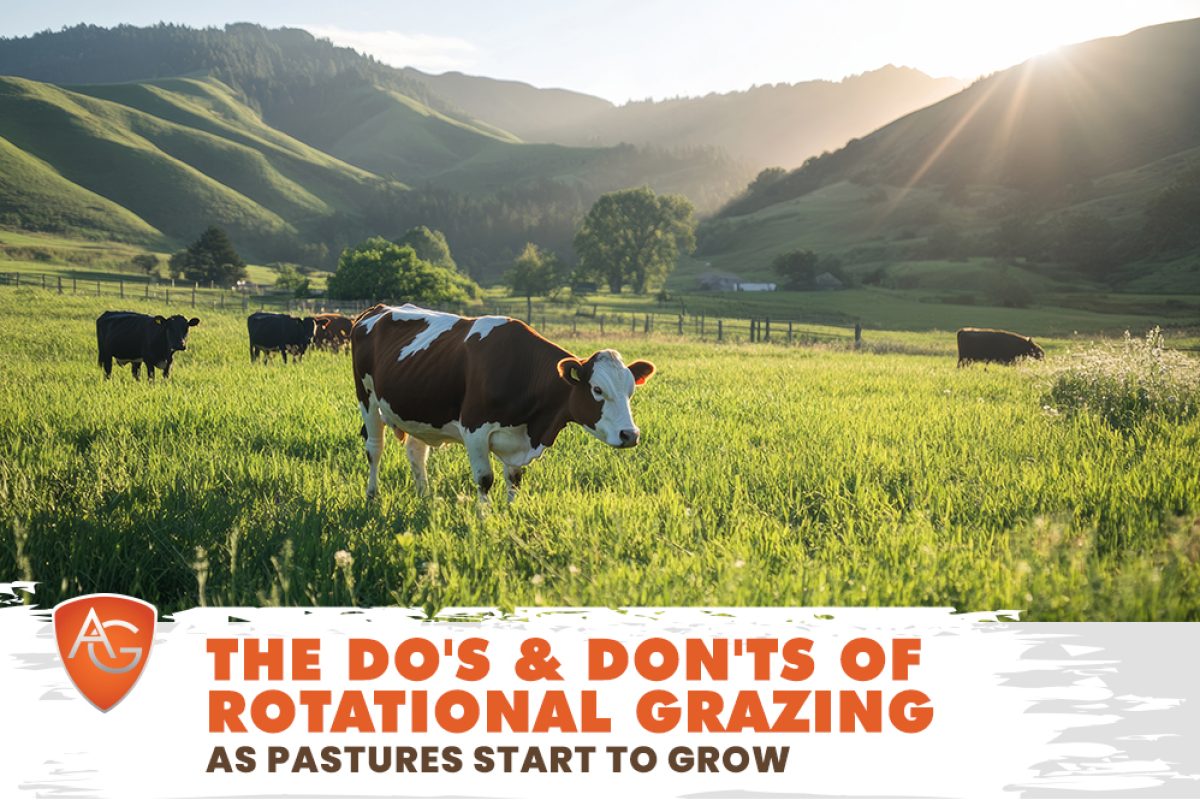Overview: Optimize your grazing system this spring with these do’s and don’ts of rotational grazing. Learn how Laramie County and Northern Colorado ranchers can maintain healthy pastures while ensuring livestock nutrition.
As spring approaches in Laramie County, Wyoming, and Northern Colorado, pastures are beginning to green up, signaling the start of another grazing season. Rotational grazing is an excellent way to maintain healthy pastures, improve livestock nutrition, and maximize forage production. However, it requires careful planning to get the most out of your land.
Here’s a breakdown of the key do’s and don’ts of rotational grazing to help ensure your pastures thrive!
>> Related Reading: What is Rotational Grazing? Everything You Need to Know
The Do’s of Rotational Grazing
Start Slow & Observe Growth : The first rule of rotational grazing is patience. Early in the season, Wyoming Timothy/Garrison and other grass are still establishing. Start with light grazing and gradually increase livestock numbers as growth picks up. Overgrazing too soon can damage root systems and stunt pasture recovery.
Divide Pastures for Even Grazing : Break your land into smaller sections and rotate livestock strategically. This method allows Northern Colorado ranchers to prevent overgrazing in one area while giving other sections time to recover. A well-planned system improves forage regrowth and soil health.
Monitor Grass Height : A good rule of thumb is to let the grass reach at least 6-8 inches before grazing and leave at least 3-4 inches behind. This helps maintain strong root structures and ensures continuous regrowth throughout the season.
Ensure a Steady Hay Supply for Transition Periods : Even with an effective rotational system, there will be times when pasture forage is limited. Keeping high-quality hay in Laramie County on hand — such as Orchard/Brome/Timothy with Light Alfalfa or North Park Timothy Grass — helps bridge the gap, ensuring livestock receive consistent nutrition.
Rotate Based on Grass Recovery, Not a Set Schedule : Each pasture grows at a different rate depending on rainfall, temperature, and grazing pressure. Rather than sticking to a strict rotation timeline, adjust based on pasture recovery. This is especially important in drier regions like Wyoming and Northern Colorado, where moisture levels vary.
The Don’ts of Rotational Grazing
Don’t Let Livestock Stay Too Long in One Area : Leaving animals in one paddock too long leads to overgrazing, soil compaction, and weaker plant regrowth. Rotate livestock before they graze too low — this protects both soil integrity and forage quality.
Don’t Forget Water Access : Each grazing section should have a reliable water source. In areas like Laramie County, where water availability can be limited, consider portable tanks or piped water solutions to keep livestock hydrated and reduce pasture damage near water troughs.
Don’t Neglect Soil Health : Over time, continuous grazing without soil management depletes nutrients. Integrate practices like fertilization, aeration, and seeding with Wyoming Timothy/Garrison or other suitable forages to maintain a healthy pasture base.
Don’t Ignore Seasonal Adjustments : What works in early spring may not be effective by mid-summer. As temperatures rise, growth slows, and some areas may need longer recovery periods. Northern Colorado ranchers should adjust stocking density and grazing duration based on seasonal conditions.
Here’s a quick guide on >> Bale Grazing Dos and Don’ts that might interest you!
Set Your Pastures Up for Success
Effective rotational grazing takes time to perfect, but the benefits — healthier soil, higher-quality forage, and improved livestock nutrition — are well worth the effort. By following these do’s and don’ts, Wyoming and Northern Colorado ranchers can maximize their pasture potential while ensuring sustainable grazing for years to come.
For those looking to supplement grazing with high-quality hay, All Around Ag has a steady supply of Timothy Grass, Alfalfa, Orchard/Brome/Timothy mix, and more to keep your livestock in top shape throughout the season.
